http://www.cnn.com/2013/03/16/living/shipwreck-survivor-story/index.html?hpt=hp_c2
Shipwreck survivor recounts drama on high seas
STORY HIGHLIGHTS
- Quen Cultra sailed around the world in a self-built boat in his 20s
- Forty years later, the real estate manager decided to conquer the high seas once more
- He and two friends set sail in August 2007 for the around-the-world journey
- Two tropical storms abruptly ended their journey off the coast of southeastern Africa
(CNN) -- On the prairies of Illinois, Quen Cultra labored in his barnyard on another absurdity: building a boat to sail around the world.
When he built the first one 40 years earlier, farmers called it "Cultra's Ark." He preferred "Queequeg" from the classic "Moby Dick." He harpooned the ridicule by indeed circling the Earth, even surviving a hurricane. He even wrote a book about it.
Now Cultra was in his 60s, no longer the lean former football player just out of college. Though white-haired and heavier, he still exuded derring-do and country charm. The voyage would reprise how a real estate manager from rural America could conquer the seas, though he lived far from water.
He invited his friend Leo Sherman to join. Why not, Sherman thought. Both men were from nearby towns in rural Iroquois County, Illinois. Sherman considered Cultra a gentle and hardworking man, passionate about family and his ideals. They became fast friends.
Joining them was Joe Strykowski of Florida, a marine naturalist and diver with a big smile. He met Cultra at a celestial navigation classthat Cultra taught for years in Chicago.
Now that they were done raising kids, the three men were ready for an adventure. They found it aboard the Queequeg II, a 43-foot catamaran that Cultra built in a landlocked plain.
But their journey ended in disaster when two powerful storms upended the catamaran off the coast of Africa.
It has taken four years for Sherman to publicly speak about what happened during those fateful days.
His tale is of the everyman who, at some point in life, finds himself staring into an abyss of hopelessness -- and then discovers the world still has one last act of charity in it, enough to save your life.
Rainbows, killer whales and kangaroos
When the Queequeg II left U.S. soil off the Florida Keys on August 23, 2007, Leo Sherman didn't know if he would like sailing.
The crew met up with family and friends during their journey.
The endless horizons of the sea changed that.
He didn't know life could be so good, traveling to Belize, Australia, Timor, Christmas Island and Mauritius.
Sherman celebrated his 55th birthday in Panama, where he learned some Spanish and woke to monkeys howling in the distance as the boat journeyed through the canal.
Their journey was supposed to last two years. Family and friends occasionally joined, becoming new crew. Sherman even left the voyage to undergo hip surgery, returning to the boat several months later in Australia.
Days passed with three-margarita afternoons, long siestas, feeding birds at his shoulder, and fishing on a crude reel made of line and a spool.
He saw double rainbows, pods of killer whales, kangaroos and shooting stars.
At 6-foot-1, he was the tallest man in the village of Kupang, Timor -- and "a few shades lighter," he quipped. There, the crew talked themselves out of a 1 million rupee ($500) fine for failing to give notice of arrival to customs officials. They ended up paying $150.
He wore a skirt in Bali. The crew also climbed an inactive volcano.
In between it all were moments where he emptied his soul into the ocean.
"I spent a lot of time on the back of the boat thinking about things," he said.
A rising wall of water
The Queequeg crew spent Christmas 2008 in Mauritius. It took 23½ days to arrive at the Indian Ocean isle from Christmas Island.
"That was a beautiful sight to see that island," Sherman said.
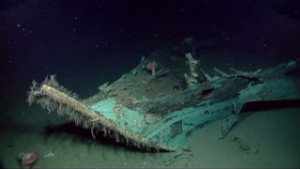
By January 16, 2009, the crew was anxious to travel to nearby Madagascar and the African continent.
After Cultra checked the forecast -- and apparently saw nothing amiss -- they set sail. It was to be the last voyage of the Queequeg II.
The skies misted as they left Mauritius on a leg that was to last six days and cover 600 nautical miles.
The rain worsened over the next four days.
Sherman began his three-hour shift at the helm at 1 o'clock in the afternoon.
The twin-hulled boat heaved with growing waves, some reaching 40 feet in height.
Cultra and Strykowski rested below deck, in the main salon.
What the trio didn't know was that Tropical Cyclone Fanele was barreling over southern Madagascar, head-on toward the boat, and Tropical Storm Eric was raging to starboard.
Sherman noticed something odd: The rain fell horizontal.
Cultra then relieved him.
"I was a rookie," Sherman said of his helmsmanship. "I knew that day I earned my wings. I was no longer a novice. I had made it. I got inside that cabin, and I was never so happy to get inside."
It was the captain's turn at the wheel.
Heading into the fury, Cultra altered course. He surfed the boat with the waves, rather than beat against them.
But Cultra couldn't see what was rising behind him.
It was unlike anything Sherman had seen: a 50-foot wave.
"Look!" Sherman warned, pointing to a wall of water the size of a five-story building.
It was too late. The wave crashed aboard the Queequeg II.
Every man for himself
"The next thing I know, I'm doing a somersault," Sherman said. "All of sudden, all of that stuff in the cabin went everywhere."
The world was now upside down. The catamaran had done a pitchpole, turning end over end.
On January 19, 2009, two tropical cyclones bore down on Mozambique.
With a fat lip and injured arm, Sherman stood on the cabin ceiling, in rising water.
"You shake your head and say, 'What the hell just happened?' " Sherman said.
Sherman asked Strykowski if he was OK. He responded he couldn't find his eyeglasses.
Sherman looked for the skipper, but Cultra, 69, wasn't at the helm.
"I saw Quen float away," Sherman said. "It has got to be the most God-awfullest memory I've got -- to not be able to reach out and grab him."
Strykowski consoled Sherman.
"Joe's comment was, 'Every man for himself,'" Sherman said.
With water rising inside, the boat's contents began floating away, but the two men grabbed the life-saving gear. Diesel fuel from the boat's ruptured tanks saturated the two men.
The storm's powerful waves continued to pummel the capsized boat.
"We're like lightning bugs in a coffee can. When those waves hit, we're just getting slammed around like crazy," Sherman said.
They each found wetsuits to dive from the main salon to Cultra's sleeping berth in one hull to find survival gear, but couldn't locate any.
So they planned a dive to their berths in the other hull 15 feet away, where Strykowski had stowed flares, lights and fresh water.
Sherman plunged first, setting a guide rope for Strykowski.
Successful in the underwater swim, he tugged the line twice for Strykowski to proceed. He was to pull hand-over-hand on the line to meet Sherman. What could go wrong? After all, Strykowski was a master diver, Sherman thought.
"I'm holding the line," Sherman recounted, "and I feel some movement. And then I don't feel anything. And then I wait and I wait and I'm going, 'This ain't good.' "
Sherman searched for Strykowski.
"He's gone," Sherman said. "I'm alone now and he left me."
Strykowski, 73, had been swept away. Like Cultra, he was never found.
"I'm alone. I'm trying to find things to make my situation better," Sherman said.
Stay with the boat
He remembered Cultra's advice for an accident: Stay with the boat.
Thirty-foot waves tossed the sailboat like a toy rattle, battering and bloodying Sherman inside. Darkness fell two hours after the capsizing.
The storms generated powerful waves that overturned the Queequeg as it headed from Mauritius to Madagascar.
Sherman thought he was sending an SOS signal to the world by activating an "epirb" -- short for emergency position indicating radiobeacon -- which is a satellite-connecting beacon that resembles a floatable walkie-talkie.
He tied it to his body, high and dry, for safekeeping but he didn't realize he was shutting it off by removing it from the water. Unknown to him, the Coast Guard became confused about the on-and-off distress call.
He slept the first night in the bathroom and shower. A life jacket and two five-gallon jugs of water buoyed him from drowning. He had donned a second wetsuit to fight the cold, but his teeth still chattered uncontrollably.
Every time Sherman nodded off, a splash awakened him.
The boom, now underwater, drummed against the cabin.
Fatigued and hungry the next morning, he scavenged for food.
"I found a bag of Bing cherries," he said, "and I thought I hit the lottery."
Despite his desperate situation, he had work to do.
Armed with a wood chisel and a hammer, Sherman spent four hours carving a hole in the bottom of the plywood-and-fiberglass hull, whch was now the submerged boat's top deck and visible to any passing vessels. He bloodied his hand as the waves knocked him off balance.
Water gushed through the hole, so Sherman wore a snorkeling mask.
With an opening to the world, he dispatched another SOS: He tethered the epirb to a line and tossed it into the roiling seas.
The strobe light ignited, and the distress call was sent.
With that, the crew's families back in the United States, who thought everyone was lost, knew for certain someone was alive.
All the time, the storm kept raging.
On the second night, Sherman slept in a hammock that he made of wire. He hung it above the water in the bathroom.
The interior become an acid bath from leaking engine batteries. The diesel fumes now overwhelmed him.
But he still found a way to brush his teeth, one pleasure amid the privation.
In the middle of the night, he swore he saw a light through the hole.
Yet there was no full moon, so he stuck his head out the new porthole. A wave crashed on his face. He retreated.
"I thought I was seeing things," Sherman said.
Then he thought he heard a voice.
"Joe? Quen? Anybody? God help me!" Sherman uttered to the nothingness.
He believed he was dreaming. But he wasn't.
Aboard a passing freighter, someone with a spotlight shouted out to any survivors.
In fact, the freighter was the second vessel to come upon the capsized Queequeg II.
A tanker had earlier passed by but believed nobody was alive. Fully loaded, the tanker rode low in heavy seas and struggled. It left after the freighter arrived, which began a watch that lasted more than 14 hours.
Letting go
The next morning, Sherman peeked through the hole again.
Like an answered prayer, the freighter had been waiting on Sherman since the previous afternoon.
"I got up and started waving my arms," he exclaimed. "I couldn't be more excited."
A complicated, perilous maneuver rescued Sherman from the bobbing sailboat.
Leo Sherman talks to the U.S. Coast Guard, five minutes after he was rescued.
During the retrieval, however, Sherman was ordered by the freighter captain to let go of his duffel bags because they weighed too much -- and imperiled his rescue.
Sherman let go.
Drifting away in those bags was $5,000 cash and the manuscript of Cultra's second book, written in the captain's own hand, forever lost at sea.
Over those two days, Sherman and the capsized Queequeg had drifted 80 miles. He was found 200 miles off the coast of Madagascar.
To this day, Sherman describes the freighter's crew of 18 Korean nationals, eight Filipinos and two or three Indonesians -- he counts them all -- as "angels."
When he returned to the plains of Illinois, he felt guilty being the sole survivor.
"Why me?" Sherman said. "I do think about the guilt, about saving my own life and not those other two guys. It does eat on me a little bit, but not as much as it used to. Hell, it's been only four years, so I still think about it quite a bit."
Sherman is now a changed man at age 60. He focuses on the big picture of life.
You're looking at the luckiest guy on the face of this Earth.
Leo Sherman
Leo Sherman
"I just don't get excited about the little stuff anymore," Sherman said. "The whole experience puts problems into perspective. People get excited about something that's not right or going wrong, and I sit there and look at them and say, 'What do you get so excited about? It's a little thing.'"
He also has a greater respect for life and "how quickly it can be taken away from you in a heartbeat."
Today, he checks the weather himself before sailing. And he's been able to resume sailing, although he said it was difficult to step foot on a boat again, which he did six months after the shipwreck.
"You're looking at the luckiest guy on the face of this Earth," Sherman told a recent gathering of the Los Angeles Adventurers Club, a group of intrepid travelers who invited him to be their guest speaker.
"I've talked to lots and lots of sailors," Sherman continued, "and they tell me they've heard all kind of stories about pitchpoling -- but never from the guy who was there."
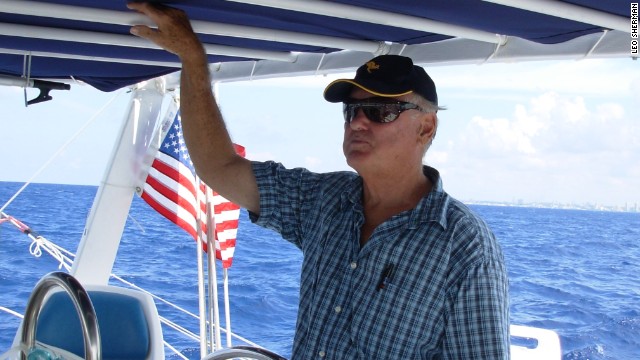 When he was in his 20s, Quen Cultra built a boat and sailed it around the world. Forty years later, the retired Illinois
When he was in his 20s, Quen Cultra built a boat and sailed it around the world. Forty years later, the retired Illinois 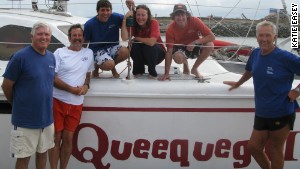
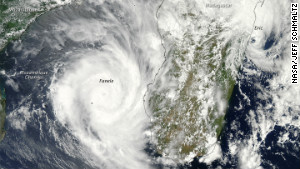
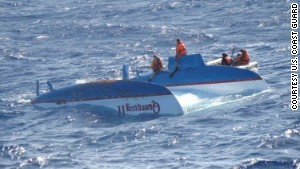
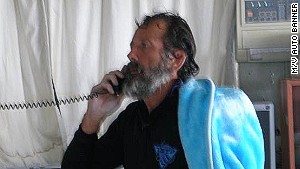
No comments:
Post a Comment